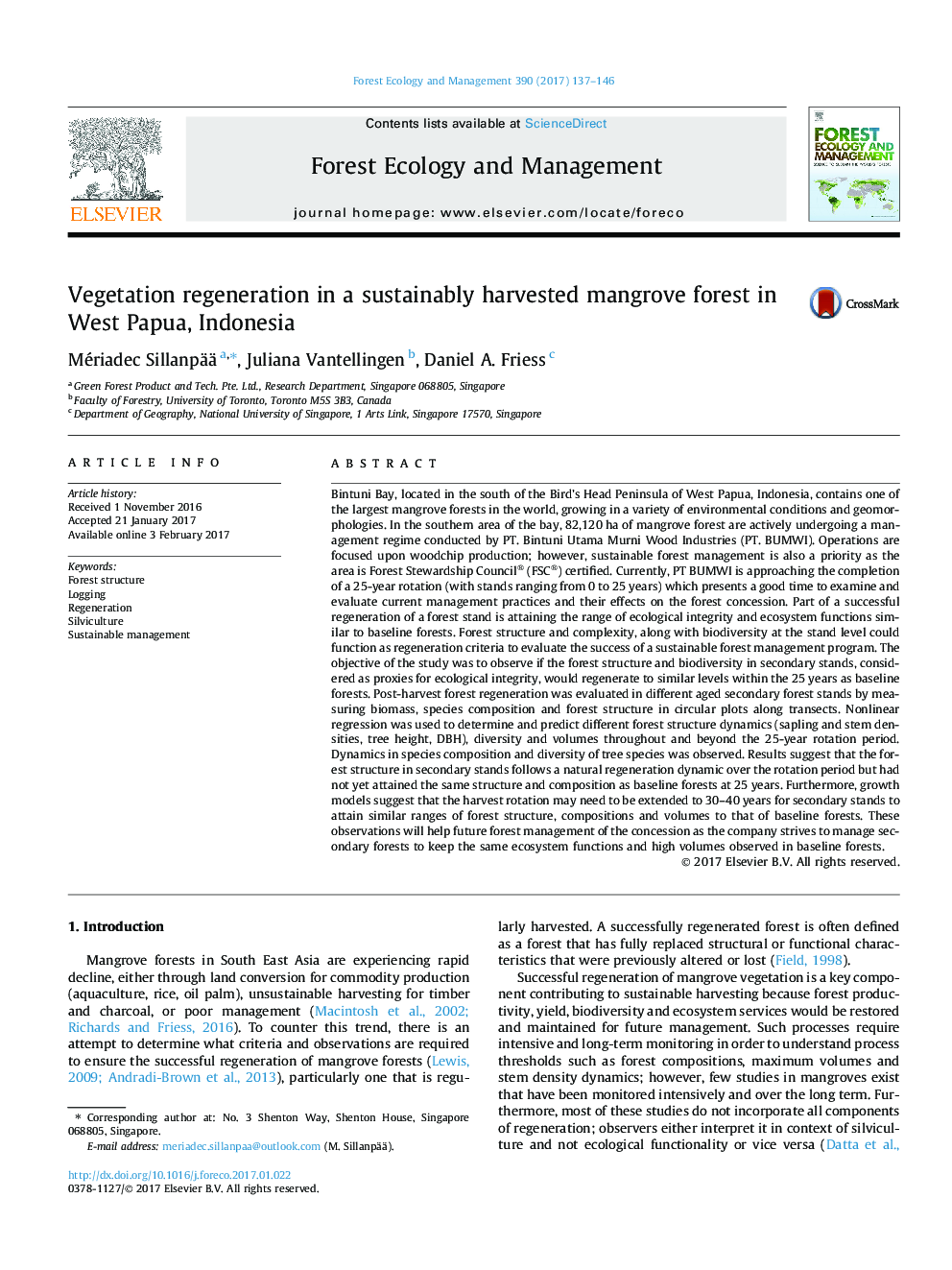| کد مقاله | کد نشریه | سال انتشار | مقاله انگلیسی | نسخه تمام متن |
|---|---|---|---|---|
| 6459517 | 1421368 | 2017 | 10 صفحه PDF | دانلود رایگان |
- Bintuni Bay mangroves undergo a 25-year harvest regime for woodchip production.
- Mangrove regeneration criteria: forest structure and species diversity.
- Successful regeneration occurs in secondary forests, with higher stem density.
- Species diversity and volumes higher in baseline forests than secondary forests.
- Extension to a 30-40Â year harvest cycle suggested to satisfy SFM criteria.
Bintuni Bay, located in the south of the Bird's Head Peninsula of West Papua, Indonesia, contains one of the largest mangrove forests in the world, growing in a variety of environmental conditions and geomorphologies. In the southern area of the bay, 82,120Â ha of mangrove forest are actively undergoing a management regime conducted by PT. Bintuni Utama Murni Wood Industries (PT. BUMWI). Operations are focused upon woodchip production; however, sustainable forest management is also a priority as the area is Forest Stewardship Council® (FSC®) certified. Currently, PT BUMWI is approaching the completion of a 25-year rotation (with stands ranging from 0 to 25Â years) which presents a good time to examine and evaluate current management practices and their effects on the forest concession. Part of a successful regeneration of a forest stand is attaining the range of ecological integrity and ecosystem functions similar to baseline forests. Forest structure and complexity, along with biodiversity at the stand level could function as regeneration criteria to evaluate the success of a sustainable forest management program. The objective of the study was to observe if the forest structure and biodiversity in secondary stands, considered as proxies for ecological integrity, would regenerate to similar levels within the 25Â years as baseline forests. Post-harvest forest regeneration was evaluated in different aged secondary forest stands by measuring biomass, species composition and forest structure in circular plots along transects. Nonlinear regression was used to determine and predict different forest structure dynamics (sapling and stem densities, tree height, DBH), diversity and volumes throughout and beyond the 25-year rotation period. Dynamics in species composition and diversity of tree species was observed. Results suggest that the forest structure in secondary stands follows a natural regeneration dynamic over the rotation period but had not yet attained the same structure and composition as baseline forests at 25Â years. Furthermore, growth models suggest that the harvest rotation may need to be extended to 30-40Â years for secondary stands to attain similar ranges of forest structure, compositions and volumes to that of baseline forests. These observations will help future forest management of the concession as the company strives to manage secondary forests to keep the same ecosystem functions and high volumes observed in baseline forests.
Journal: Forest Ecology and Management - Volume 390, 15 April 2017, Pages 137-146
